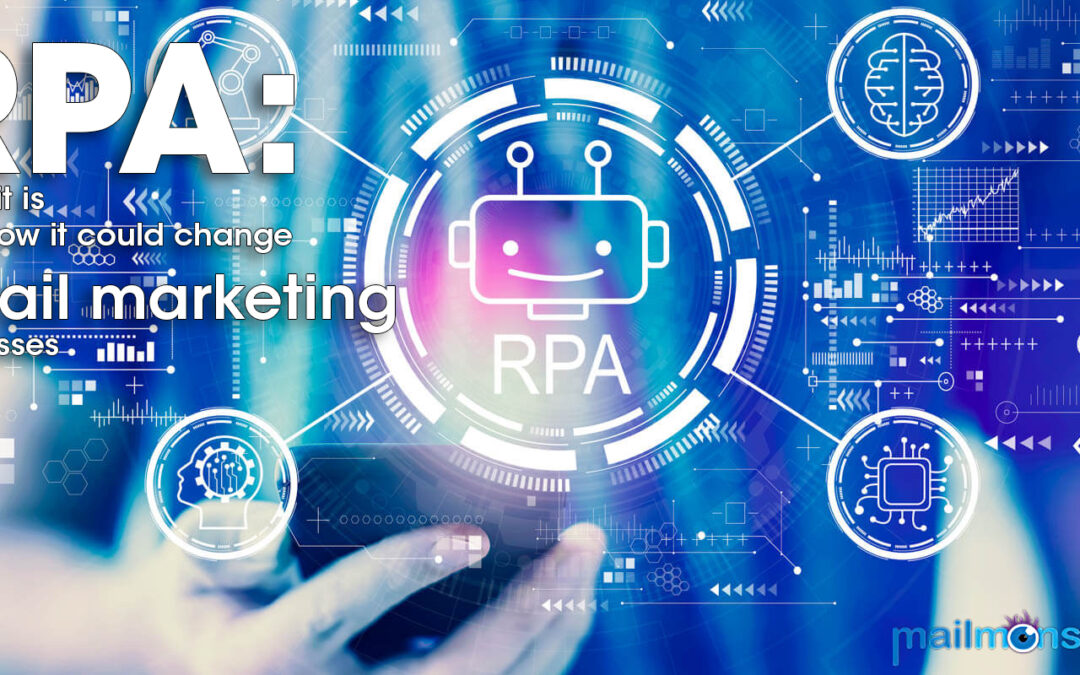The automation of processes by robots (Robotic Process Automation – RPA) is all technology oriented to the use of software with the aim of reducing human intervention in the use of computer applications, especially in repetitive tasks that vary very little in each iteration.
RPA is a relatively new term, but not the concept behind it, since for decades ways have been sought to optimize resources through software that performs specific functions in record time!
What truly means ROBOTIC PROCESS AUTOMATION
When we talk about robots we tend to think of heavy machines that carry out industrial tasks, mainly on assembly lines.
RPA extrapolates this concept of automation to purely computer models, therefore we speak of software robots, and it is the trend that promotes adding new levels of quality and productivity in the Digital Transformation strategy of every company.
BMP VS RPA
Although BPM and RPA operate with similar process logic based on events, actions, conditions, and loops, the context in which they are applied is vastly different. BPM (Business Process Management) aims to ensure that the operational and business process infrastructure is solid.
RPA is used to undertake tasks just as a person would, but at a much higher speed; therefore, it operates at a more superficial level.
Both are relatively quick to implement, and allow a very versatile adjustment to possible changes in the processes.
BPM can be seen as the basis on which the company operates, applying on this technology the orderly workflow that integrates users, systems and data in a coordinated and efficient way, being able to provide native integrations with external systems.
RPA, for its part, will allow certain tasks within the company’s workflow to be undertaken in record time, notably improving the times for repetitive tasks that generate bottlenecks.
Ultimately, RPA and BPM are not in conflict with each other. Although both seek the optimization of processes, their area of influence is different, and each case will require a greater presence of one or the other, although most of the time the best solution will be to implement both.
Although RPA may be more appealing in the first place, many of the times what a company needs is to establish a proper workflow between its departments and employees, instead of optimizing a repetitive task in question.
EMAIL MARKETING AND RPA
According to a recent survey from UiPath, automation has become a key part of business processes, with 91% of global organizations reporting that they currently use automation technologies and 93% stating that automation is at the center of their digital transformation initiatives.
Not only is automation in place; it’s delivering value: 73% of survey respondents say they are very or entirely satisfied with the returns they’ve seen from their automation technologies.
With senior executives increasingly prioritizing automation as a strategic imperative, we’re seeing the emergence of Chief Automation Officers and even automation committees.
Historically, automation has been frequently prioritized in back-office operations, including in finance, human resources (HR) and legal operations, but in two years, those surveyed predict a big surge in automation for marketing.
By leveraging Robotic Process Automation (RPA), marketing teams are also seizing the opportunity to enter the “Automation-First” era.
It’s proven not only as a driver for digital transformation and increased productivity, but also for a more engaged workforce. Since less time is spent on tedious, time-intensive tasks, marketers are freed up to be more creative and strategic.
Marketers know better than most that innovating ahead of the curve couldn’t be more critical when reaching their core audience. There is no need to stop this mindset from permeating the way marketers execute their job each and every day. The time to automate and leverage RPA technology is now.

